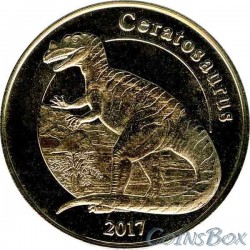No products
Product successfully added to your shopping cart
There are 0 items in your cart. There is 1 item in your cart.
Mayotte
- Sets of coins
-
Coins
- Coins Russia and CIS
-
Europe
- EURO
- Austria
- England
- Belgium
- Germany
- Italy
- Spain
- Latvia
- Lithuania
- Estonia
- Luxembourg
- Portugal
- France
- Finland
- Cyprus
- Andorra
- Greece
- Netherlands
- Slovakia
- Slovenia
- Ukraine
- Belarus
- Sweden
- Poland
- Norway
- Denmark
- Ireland
- Iceland
- Switzerland
- Monaco
- Liechtenstein
- Bulgaria
- Hungary
- Moldova
- Romania
- Czech
- Vatican
- Albania
- Bosnia and Herzegovina
- Macedonia
- Malta
- San Marino
- Serbia
- Croatia
- Montenegro
- Turkey
- Kazakhstan
- Transnistria
- Scotland
- Gibraltar
- North America
- South America
- Australia and South Pacific
- Africa
- Asia
- Tokens
- Silver
- Accessories
- Sochi 2014
- Banknotes
- Sale
- Marriages and species
- Sundry
Top sellers
-

-

-

Official set of series Russian Federation. Issue 11
Official set of series "Russian Federation". Issue 11
4 650 руб -

100 RUB Sochi 2014
680 руб -

-

-

10 kopeck 2015 MMD
7 руб -

-

1 Dollar First Patent 2018
250 руб -

Official set of series Russian Federation. Issue 12
Official set of series "Russian Federation". Issue 11
5 350 руб
No supplier
Viewed products
Mayotte Island 1 franc Iguanodon 2018
Data sheet
| Weight | 16,5 |
| Diameter (mm) | 35 |
| Material | Copper-Nickel |
| Edge of the coin (milling) | fluted |
| Series | Аnimals |
| Country | France |
| Release date | 2018 |
| Quality | UNC |
Warning: Last items in stock!
More info
Mayotte Island 1 franc Iguanodon Dinosaur 2018.
One of two coins of the fourth series.
Mayotte Island overseas department of France.
Iguanodon (lat. Iguanodon, from iguana and other Greek ὀδούς - tooth) is a genus of herbivorous bird-laying dinosaurs. Initially, this species was attributed to various species that lived on the territory of modern Asia, Europe and North America, but since the first decade of the XXI century, it is considered that the only species that belongs to the genus of iguanodons is not in doubt modern Belgium, Spain and some other countries about 126-125 million years ago (early Cretaceous). Distinctive features of the iguanodon were a sharp claw on the thumb, which was supposedly used to protect against predators, and tenacious fingers, adapted to search for food.
Iguanodon was a large herbivore, with a massive body, reaching about 10 meters (33 feet) in length and weighing up to 3.5 tons. The arms were long (up to 75% of the length of the legs) and strong, this suggests that he spent most of his time standing with all his limbs on the ground, eating food, but in case of danger, he could quickly move on powerful hind legs. The forelegs had 5 fingers each, of which the three middle fingers were most developed, the thumb on the hand had the shape of a large conical spike, located at a right angle with respect to other fingers. The hind limbs had three large fingers, the bones of the limbs were powerful, and the spine was strengthened with rigid tendons.
The published calculations suggest that the iguanodon could reach speeds in bipedal positions up to 24 km / h. The speed when moving on four legs was probably lower. These large animals had narrow skulls with a toothless beak, probably covered with keratin. The upper jaw contains up to 29 teeth on each side, the lower jaw contains up to 25 teeth, the teeth in the lower jaw were wider than at the top.
Given the deep placement of teeth in relation to the outer side of the jaws, the iguanodon had a peculiar cheek to hold food in the mouth. When the jaws were closed, the upper jaw was turned outward, which resulted in a chewing movement.












